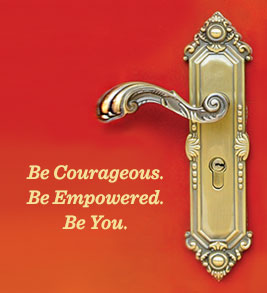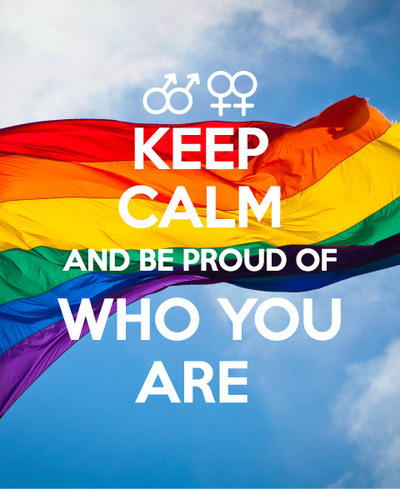We all have those days when we feel down or negative. The crazy thing is, one of best ways to feel better is to do something nice for yourself or someone else. If you scatter some sunshine, you can’t help but get some on yourself!!

Advice and Announcements for VSU Students
Loss is hard. Fortunately, most college students who are dating don’t have to deal with their boyfriend or girlfriend dying. It does happen, but it is a lot more rare than a typical break up. However, many students do lose grandparents, a parent, brothers or sisters and even friends. It makes you think about how fragile life really is. It can make you stop and evaluate your choices in life. There are so many things people take for granted when it comes to the people they love.
It is easy in the every day stresses of life to believe that the people you count on the most will always be there for you. I have met with a lot of students who really can’t imagine losing their boyfriend or girlfriend or even their close friends to death. It is easier to imagine losing a grandparent or distant relative. It is a little harder to comprehend the loss of a parent, a sibling or a friend who still has so much life to live.
That is usually why it can be harder to accept. No matter how a person dies, when it happens to someone you love, it can be hard to understand and accept. So, how do you move forward after losing a loved one? You’ve probably heard it takes some time. It isn’t easy, no matter what anyone tells you. Your mind, your heart and your soul are going to go through a long process. The grief process has five steps. 1. Denial 2. Anger 3. Bargaining 4. Depression 5. Acceptance
You notice that acceptance comes after a lot of other emotions cycle through. No person grieves the same either. That is why it is hard to know what to say to someone who is grieving. Some people want to talk about the person and feel better when they open up. For others, they don’t want to talk about it. They do better when they stay busy and distract themselves a little more. For most people, you can’t go wrong with giving the person who is grieving a hug and asking if there is anything you can do for them. Sometimes just bringing them a home cooked meal is enough. Just knowing that you care and you want to help is better than nothing.
If you are the one grieving, be patient with yourself. Some days you’ll wake up feeling better only to crash back into depression or anger a few hours later. It is a long grueling process, but time does eventually help. The days and weeks pass and your brain will start to adjust. At first, you may be resistant to letting go of your pain. You don’t want your loved one to feel that you’ve forgotten them. I remind people who are grieving that you can still remember them without feeling so much pain. You can start to remember them with a smile and actually feel happy in your memories instead of feeling so lost or sad.
Life has a way of marching on whether we like it or not. Days, weeks, months and then even years pass. New people come into our life. They don’t replace the people we lost, but they fill in the gaps that are still there in our lives that need to be filled. The only positive thing about loss is being able to empathize and understand what other people are going through when they experience it. You will be able to relate and give encouragement to those people because you’ve been their yourself. This may help you, in a way, deal with your own loss. Giving to others has a way of healing your own heart from the pain.
Even though we are all different, all of us at one point or another are going to experience a loss of some kind. I hope you never have to experience what the people of Aurora, Colorado are experiencing. I also hope as a college student you don’t have to go through the death of parent, sibling, friend, boyfriend or girlfriend. It is hard enough to get through the stresses of college. Going through a major loss can make it a lot more complicated. If it does happen to you, know that you have choices. You can withdraw from classes for the semester and take a leave of absence. This will allow you to focus on your family or getting help for yourself without having to stress about papers and tests. Many students have had to do this and come back to school after a few months feeling a lot more prepared to deal with class. Other students need the distraction and choose to stay in school at this time. There really is no right answer on how to best deal with situations like this. Do what you think is best for yourself and your situation, and try not to compare yourself to others students.
Also, find trusted family and friends to talk to and gain support from. You may also decide counseling is something you would like to try. It can be helpful because you are able to open up without feeling like your burdening your family or friends who may be dealing with their own grief. Many people have stated that counseling has been helpful, but it isn’t for everyone. You can do some research to find out what ways of grieving will work best for you. Just remember it is a process. It is okay to be angry, upset and sad. However, if you feel you’ve been stuck in one part of the grieving cycle too long, it is time to do something to be able to move forward. One step at a time is the best way to approach the grieving process. Feel free to look into any of the websites listed below that may be helpful.
After a great performance, athletes have described a feeling of being “in the zone.” In this state, they feel invincible, as if the game slowed down, the crowd noise fell silent and they achieved an incredible focus on their mission. What is this Superman-like state and how can players enter it when they most need it?
Like the feeling of being moved down a river by the current, this positive groove has been described as a “flow.” In fact, Mihaly Csíkszentmihályi, psychology professor at Claremont Graduate University in California, coined the term in his 1990 book, “Flow: The Psychology of Optimal Experience” (Harper & Row, 1990).
From his years of research, Csíkszentmihályi developed an entire theory around the concept and applied it not only to sports, but also to work life, education, music and spirituality.
Csíkszentmihályi identified nine components of the state of flow. The more of these you can achieve, the stronger your feeling of total control will be.
1. Challenge-skills balance is achieved when you have confidence that your skills can meet the challenge in front of you.
2. Action-awareness merging is the state of being completely absorbed in an activity, with tunnel vision that shuts out everything else.
3. Clear goals come into focus when you know exactly what is required of you and what you want to accomplish.
4. Unambiguous feedback is constant, real-time feedback that allows you to adjust your tactics. For example, fans and coaches will let you know how you’re doing.
5. Concentration on the task at hand, with laser-beam focus, is essential.
6. Sense of control is heightened when you feel that your actions can affect the outcome of the game.
7. Loss of self-consciousness occurs when you are not constantly aware of your success.
8. Transformation of time takes place when you lose track of time due to your total focus on the moment.
9. Autotelic experience is achieved when you feel internally driven to succeed even without outside rewards. You do something because you love to do it.
Flow doesn’t only happen to athletes. In any activity, when you’re completely focused, incredibly productive and have lost track of time, you may be in the flow. You may not be shooting for three, but you can still say you are “in the zone.”
This article originally appeared on livescience.com and was written by Dan Peterson
I saw this post on Freshly Pressed. I thought it was great and wanted to share it here. Please click on Queer Confessions to read more from this great blogger.
I remember the first time I came out to anybody. I was a socially awkward fifteen year old boy living in Texas. I had no athletic prowess to boast, and my musical tastes were closer to my father’s than to my peers. For three years, I kept my sexuality a secret from everybody because I was terrified of being gay. I didn’t know any other gay kid or adult, so I felt lonely and misunderstood. The only thing that scared me more than my solitude was the very real possibility that others could hurt me with their words or fists if they found out that I preferred boys over girls.
At fifteen years old, I decided that I had lived under fear long enough. There was a reality show on TV back in 2001 that documented the lives of average high school students, including one gay youth; his visible gayness gave me the courage to share my secret with one person. When I came out to a friend in my youth group, I was frightened that he would make my life a living hell – and because my friend was the most popular youth in our very large church, he had the means to do so. But he did not make my life miserable; he said, “Thank you for telling me. This doesn’t change who you are. You are still my friend.”
That was almost 12 years ago, and since the winter of 2001, I have mastered the art of coming out to friends, coworkers, and family. I have told my conservative, evangelical friends about my sexuality, and I have come out to my liberal friends and colleagues. I have come out in intimate conversations and in public speeches before large crowds. I have come out to straight neighbors and gay neighbors, rich friends and poor friends, Christian friends and doubting friends; by and large, I am a better man for being honest about myself. I feel better knowing that I can be my true, genuine self around my peers, because I do not have to hide something that is a profound part of my existence. I can simply be, and I can simply be gay.
My friends remind me that I am a brave man for coming out. A friend of mine regularly tells me, “You are the bravest, most courageous person I know;” this same friend has a story of being delivered by the grace of God from a life of crime (including murder), counterfeiting money, gang banging, and homelessness. Another friend said that my decision to tell my story to a crowd of evangelical Christians numbering over 200 was, perhaps, the bravest thing he ever saw a person do. These comments puzzle me; I am simply being honest. Aren’t Christians supposed to be honest? And yet, in this society, honesty is bravery; it takes courage to tell the truth.
Two realities – one societal, and the other personal – remind me why it is so important for my LGBT brothers and sisters to come out and make their sexualities known to their network of friends and colleagues. Extremists from the far right will call us monsters, abominations, and sick perversions; their subordinates will tacitly (or not so tacitly) agree with them. The extremists are content to shove us into boxes made of fears based on ridiculous stereotypes and assumptions, and they cannot see LGBT people as such – people. When we come out, we force all our neighbors to see that we LGBT people are their neighbors, their sons and daughters, their mothers and fathers, their brothers and sisters, their aunts and uncles and cousins. We show the world that we are their teachers, doctors, accountants, scientists, politicians, theologians, preachers, dancers, musicians, and athletes. We show the world that LGBT people, like our straight brothers and sisters, can have hope, can believe in God, can walk in faith and not by sight, can embrace a peace that surpasses all understanding. We show our enemies and allies alike that we are human like them: we breathe, we eat, we laugh, we cry, we hope, we dream.
However, I am constantly reminded two days a week why I must be out and why making my sexuality visible is so vital to my well-being. I work in a church that is hostile to the LGBT community, where the parishioners will sometimes make overtly homophobic comments, where I would be fired if the leadership knew my sexuality. I do feel like I live two lives – my normal life at home where I can be out with my friends and school colleagues, and a closeted life (although the closet is transparent) where I am trapped in fear and isolation. Because I am not out to anybody in my congregation, I feel like I have no connection to anyone, for I cannot truly be myself with those people. It’s enough to make me want to leave the church (but not the one, holy, apostolic Church); for the sake of genuine relationships and my own health, I must be honest about myself to my neighbors and friends.
If you are an out and proud LGBT person, I celebrate you and your courage!
If you are a closeted or partially closeted LGBT person, I am with you. Stay strong, and may you one day find a safe place to leave that prison of fear.
If you are a straight ally, thank you of your support and love. We need you as friends and advocates.
It’s not easy to put yourself out there. Some people live to meet new people and have no fear going up and starting a conversation with a perfect stranger. Other people struggle with their fear of rejection. They are interested in new people around them, but it can be scary to start something with someone new. Especially if you’ve recently gone through a bad break up or you’ve been single for awhile.
If you have fear, the only way to get over it is to face it. Outgoing people will tell you they are less worried about how they feel and more concerned with making others feel good. If your goal is go out and meet new people, try to take your focus off your fear and focus on making just one person you meet smile. Realize that not everyone you meet is going to be interested in talking to you. That doesn’t mean there is something wrong with you or with something you said. Some people just won’t be in a good mood or be interested in any type of conversation. Don’t let those people set you back.
Look for people who seem more open or friendly. Dare yourself to give them a compliment. Try to learn something from what they are wearing or how they are interacting with others. Use your observation skills to give you something to start a conversation with. If you’ve ever noticed, shoes will tell you a lot about a person. Shoes can give you clues into hobbies someone has or what type of job they do. Their shoes can tell you if they are more laid back or more stylish with fashion. Their clothes will also give you other clues as well. Finally, look at their face and their body language. Do they gesture or show a lot of expression? Or do they seem more closed off because their arms or crossed and their face seems blank?
Also, realize that you are giving off vibes as well. What does your appearance say about you? Non-verbal cues give off a lot of information to others to let them know if you are more open or closed to being approached. Are you smiling and interacting with others? Or are you sitting alone hunched over your drink at the bar? You don’t have to be super fit and all GQ to get attention. Your appearance does matter, but how you are projecting yourself to others matters even more. You want to seem approachable instead of giving off a vibe that says, “Please leave me alone”.
It is okay to be nervous, but try to be aware if you are sending off desperation signals. Sometimes you can try TOO hard and make the initial approach very awkward. Remember to think positive and tell yourself positive things to keep your anxiety at bay. Every person has great qualities, but not all people are aware or acknowledge their positive traits. Try to focus on those qualities and realize you have a lot to offer other people. When people get nervous they can focus too much on the negative and think of everything that can go wrong. Instead, try to stop yourself from going down that path and try to be more positive about yourself and others around you. Confidence will carry you a long way.
Even if you don’t feel all that confident, you can fake it a little until you get more comfortable initiating conversations. Practicing will make it easier. I often tell some of my shyer students to start conversations in less intimidating places. For example, smile and ask how the gas station attendant’s day is going. Talk to the cashier at Wal-Mart or the grocery store. Go to places where you don’t know anyone and take a few risks without too much pressure. The more you risk facing rejection, the easier it will become. You will become used to the fact that not everyone responds positively, but that a lot of people will.
The key to remember is that you aren’t trying to make yourself feel better, you are trying to make someone else feel better that day. Not every person you interact with has soul mate potential or even one night stand potential, but you never know when you may interact with the right person who ends up becoming someone significant in your life. Just don’t give up and remember that nothing in life worth having is ever easy.
“Whether you think you can or you can’t- you are right” Henry Ford
“No one can make you feel inferior without your consent” Eleanor Roosevelt
“This time, like all times is a very good one, if we but know what to do with it” Ralph Waldo Emerson
“Fall seven times, stand up eight” Japanese Proverb
Ryan Knapick and Josh Baker have been best friends since fifth grade. Colette Gregory entered the picture in high school. She and Josh are dating now. Knapick is white, Gregory is black and Baker is half-Hispanic. To them, race doesn’t matter.
“People are finding people with common interests and common perspectives and are putting race aside,” says Knapick, 22, a May graduate of Indiana University who works at a machine shop and lives with his parents in Munster, Ind.
He and his friends are among an estimated 46.3 million Americans ages 14 to 24 — the older segment of the most diverse generation in American society. (Most demographers say this “Millennial” generation began in the early 1980s, after Generation X.) These young people have friends of different races and also may date someone of another race.
This age group is more tolerant and open-minded than previous generations, according to an analysis of studies released last year by the Center for Information and Research on Civic Learning and Engagement, part of the University of Maryland’s School of Public Policy. The center focuses on ages 15 to 25.
Another study by Teenage Research Unlimited in Northbrook, Ill., found six of 10 teens say their friends include members of diverse racial backgrounds.
Unlike their parents and grandparents, today’s teens and twentysomethings grew up with “diversity,” “multicultural” and “inclusion” as buzzwords. Many were required to take college courses in cultural diversity. Now the media fuel this colorblindness as movies, TV and advertising portray interracial friendship and romance.
Some attitudinal changes are based in demographics. About 33% of those under 18 are racial or ethnic minorities, and about 20% of elementary- and high school-age students are immigrants or children of immigrants, according to the U.S. Census Bureau.
Racial diversity is especially common in college friendships because that age group is exposed to a wider range of people, and college students have more opportunities to become friends with peers of other races, says Anthony Lising Antonio, an associate professor of education at Stanford University, who has conducted research on friendship diversity.
It’s not that young people are specifically seeking out friendships with other races, kids say.
“It goes beyond that to who you get along with,” says Karina Anglada, 17, a high school senior in Chicago whose parents are from Puerto Rico.
The ‘color-mute’ syndrome
Rebecca Bigler, 42, a psychology professor who directs the Gender and Racial Attitudes Lab at the University of Texas-Austin, traces such attitudes to baby boomer parents who may have set a tone for raising colorblind kids.
“It makes us feel racist if we acknowledge race, so we try not to, and we end up being color-mute,” she says. “Children learn from their parents that you don’t talk about race.”
Bigler is white. Her former husband, the father of her teenage son, is black. People talked about race when she was a child in the ’70s, she says, but now the younger generation — especially white kids — believe that racial injustice is “a thing of the past.”
“Society is still marked by racial inequality, and my worry is that it won’t get addressed,” she says.
Evidence of inequity is ubiquitous: A Department of Justice study released last year shows that blacks and Hispanics were more likely than whites to be searched, arrested and subjected to police use of force. And last month, the Civil Rights Project at Harvard University issued a report about inequality in American schools, even as the system becomes increasingly multiracial.
Where students go to school depends on where they live, which is dependent upon family wealth. The Harvard study found that segregation isn’t simply a black/white divide but a multiracial one, in which whites remain the most isolated group and the least likely to attend multiracial schools. California schools are the nation’s most segregated, the study found.
‘Common interests, not color’
Gregory, 24, knows that firsthand. She was born in Gary, Ind., and grew up in Los Angeles; she was the only black person in a private school in her Bel Air neighborhood. She returned to Indiana for high school, the same Catholic school Knapick and Baker attended.
“It’s more natural to me to be in a diverse setting and to be attracted to people because of common interests and not because of common color,” says Gregory, who works in fundraising at a Chicago theater company. She earned two degrees from Northwestern University.
Baker, 23, who graduated from Loyola University in Chicago and is an accounts manager for a Chicago consulting firm, says his high school’s diversity allowed him to be friends with whites, blacks and Hispanics. He says he’s Hispanic, like his mother. His father is white but is unsure of his heritage because he was adopted, Baker says.
Knapick, who is seeking work in his college major of criminal justice, bonded with Baker playing basketball, running track and as Boy Scouts. Both are Eagle Scouts and earned their honors at the same ceremony.
Some of the mixing is a result of record numbers of immigrants, both documented and undocumented, totaling more than 35 million over the past two decades and representing the largest wave of immigration in American history, says Marcelo Surez-Orozco, founder of the Harvard Immigration Project, now known as Immigration Studies @ NYU. He is a professor of globalization and education at New York University.
“We have more groups coming at a faster rate and changing our society with a speed we’ve never seen before,” he says.
In addition to immigrant families, the number of children from other countries adopted by U.S. parents has tripled from 1990 to 2005. The fact that white parents are adopting babies from China, Guatemala or South Korea who don’t look like them reinforces the idea that race matters less. So does the fact that interracial marriages, though still not common, have increased from less than 1% of U.S. marriages in 1970 to almost 6% of marriages in the 2000 Census.
The tide began turning when the Supreme Court in 1967 struck down laws in 16 states forbidding marriage between blacks and whites.
No pressure to ‘choose sides’
A Gallup Poll on interracial dating in June found that 95% of 18- to 29-year-olds approve of blacks and whites dating. About 60% of that age group said they have dated someone of a different race.
Olivia Lin, 18, of Brooklyn, N.Y., is Asian; she’s dating someone who is Puerto Rican and says her family is “pretty open to it.” Lin, who will graduate in the spring with both a high school diploma and an associate’s degree, in the fall will attend Brandeis University in Waltham, Mass., the only non-sectarian Jewish-sponsored college or university in the country.
High school freshman Aliya Whitaker, 14, of Montclair, N.J., says her mother is Jamaican and her father is African-American. Her mother encourages her to make friends with those of other races.
“She’s never told me to stick with my own people or choose sides,” Whitaker says. “When my friends have quinceaeras (Hispanic girls’ 15th-birthday celebrations) or bar mitzvahs (a Jewish coming-of-age ceremony for 13-year-olds), she encourages me to go.
“But she says: ‘Remember where you come from.’ “
This post was originally written by Sharon Jayson in USA Today. Click here to read the entire article.
This post was originally posted by The Bulletproof Musician
We are typically led to believe that being “nervous” is a bad thing. Indeed, most of the advice I’ve ever heard has been aimed at reducing anxiety. Over the years, I tried everything I could to get rid of the unpleasant feelings associated with performance anxiety. I tried eating bananas, drinking chamomile tea, imagining the audience in their underwear, sleep deprivation, practicing more, taking various supplements, and even trying to convince myself that it didn’t matter how I played. None of this, of course, took the anxiety away or did much to help me perform any better.
From my work with sport psychologist Dr. Don Greene when I was a graduate student at Juilliard and my own doctoral training in performance psychology, I’ve come to understand that anxiety itself is not the problem. The problem is that most of us have never learned how to use adrenaline to our advantage. By telling ourselves and our students to “just relax,” we are actually doing each other a disservice by implicitly confirming that the anxiety we feel is bad and to be feared. I soon learned to welcome the rush of adrenaline and to use that energy to power my performances, and to perform with more freedom, conviction, and confidence than I ever imagined possible.
The big question, of course, is how do you transform anxiety from a liability to an advantage? Before we talk about this, we first need to understand some basics about what happens to our mind under stress.
Left Brain vs. Right Brain
Our brains consist can be thought of as being comprised of two basic regions – the left hemisphere and the right hemisphere. Admittedly, it is an oversimplification of the immense complexity of our brain to imply that the left and right hemispheres are completely independent of one another, but this is a very effective model when it comes to understanding optimal mental states for performance.
Left brain thinking is associated with words, numbers, logic, analysis, criticism, rules, details, planning, and judgment. Conversely, right brain thinking is associated with sounds, images, patterns, kinesthetic or sensory input, emotions, the “big picture,” free association, and creativity.
Based on this information, which mode of thinking seems most conducive to effective practicing? Did you say left brain? Correct! Now, which seems most conducive to dynamic, inspired, and artistic performances? Right brain, exactly! Unfortunately, we often do the opposite. In the practice room, we have a tendency to practice somewhat mindlessly, merely repeating passages over and over until they sound better, making corrections, but doing so almost unconsciously. However, as soon as we walk on stage, we tend to get flooded by left brain over-analytical thinking, criticism, excessive planning, and so on, which only serves to lead to a pre-occupation with technical details and an inability to play as freely and automatically as we are capable. Are you familiar with the phrase “paralysis by analysis?” This is exactly what happens when we know that our every move and sound is under close scrutiny by others. The opposite of this paralyzed state is often referred to as “flow” or “the zone,” where everything just seems to “click” into place and our playing is easy, free, and effortless.
How do we make the shift from left brain thinking to right brain thinking and get into “the zone?” One very effective tool is called Centering.
Centering
Centering is what sport psychologists call a pre-performance routine. It was designed in the 1970′s by the renowned sport psychologist Dr. Robert Nideffer, and adapted for performing artists by Olympic sport psychologist Dr. Don Greene. Centering is a highly effective means of (a) channeling your nerves productively and (b) directing your focus even in extreme situations. Once mastered, it is very quick and highly effective, and will ensure that you begin each performance with a bang (in a good way)!
There are seven steps, each specifically designed to move you progressively closer to right brain quiet, focus, and poise, and take you further away from left brain fears, doubts, and self-criticism.
Step 1: Pick Your Focal Point
Select a fixed point in the distance, somewhere that feels comfortable. This point could be on your stand, the ground in front of you, or on the back row of the hall, but wherever it is, ensure that your focal point is below eye level. A focal point helps to minimize distractions and avoid the temptation to engage in left-brain thinking.
Step 2: Form Your Clear Intention
A clear intention is in essence, a specific goal statement. What do you intend to do when you step out on stage? How exactly do you intend to sound? What, precisely, do you intend to communicate to the audience?
Use assertive, declarative language, such as “I am going to perform brilliantly, with passion and clear dynamic contrast,” as opposed to “I hope to play well.”
Do not use the word “don’t”. Doing so will only put the negative picture in your head and generate fears and doubt. For instance, when you say to yourself “Don’t miss the high note”, what’s the first image that pops into your mind? Missing the high note, right? What image pops into your mind when you tell yourself “Nail the high note?” Learn to focus on what you want, not on what you don’t want.
Step 3: Breathe Mindfully
One of the most powerful techniques for reversing the stress response involves learning how to breathe diaphragmatically. When stressed, our bodies have a tendency to revert to shallow, rapid, chest breathing. Doing so keeps us in fight or flight mode. Diaphragmatic breathing is the most biomechanically efficient way to breathe, and furthermore, is conducive to activating what’s called the parasympathetic nervous system response which is our body’s antidote for the fight-or-flight state.
Step 4: Scan and Release Excess Tension
One of the most detrimental consequences of performance stress is muscle tension. As our thinking becomes more negative, our muscles tend to get tighter and less facile. And not just any muscles, but often the ones that we most need control over!
Scan your muscles from head to toe as you continue to breathe slowly and deeply, one muscle group at a time, releasing tension on the exhale. There is a short video clip on YouTube which illustrates an exercise that tests your ability to truly relax your muscles on command.
If you develop a more acute awareness of muscle tension even in the practice room, and are able to control the degree of tension you experience in your playing, you will be able to retain much of this ability during a performance and will feel much more in control.
Step 5: Find Your Center
Are you familiar with the martial arts concept of ki or chi? In Eastern philosophy, chi is described as being one’s “life force” or energy. There is a specific location in our body where the energy tends to congregate, which is essentially our center of gravity. If you have ever observed the movements of a great martial arts master or even some athletes or dancers, you will notice a presence, grace, and balance about them regardless of their size or physical dimensions. Not only is the feeling of being centered a very calming and reassuring one, but the mere act of searching for you center will quiet your left brain activity.
Step 6: Repeat Your Process Cue
There is a tendency when stressed to hyperfocus on minute details. This may be highly desirable in the practice room, but can be paralyzing on-stage. The solution is to focus on a right-brain process cue, in essence, a reminder of what it sounds, feels, or looks like to produce the exact sounds you want.
There are two possible ways to do this. One, you could brainstorm and experiment with words that cue up the sound/feeling/images of producing the beautiful sound, clean articulation, or solid intonation that you wish to produce. Examples of such words are smooth bowing, light fingers, even shifts, fluid, powerful, calm, or easy. It’s not the word that is important, but the resultant mental sound/feeling/image of performing exactly the way you want to that is key.
Thus, a second way to do Step 6 is to avoid using words altogether and merely hear, feel, or see yourself performing exactly as you wish.
Step 7: Direct Your Energy
By the time you have gotten to this step, you will have made the shift into a more quiet and focused mental state conducive to performing your best. You will have taken the edge off of your nerves, and in this last step you will channel the remaining energy that remains into a dynamic and inspired performance. This is how you use the energy instead of trying to get rid of it.
Do a quick internal search for all of the energy that you feel in your body, and feel it gathering at your center. I often imagined my center and energy being somewhat like those plasma lamps that are sold at stores like The Sharper Image (Google “plasma lamp” if you don’t know what I’m referring to). Now, direct that energy upwards, through your torso and neck, into your head, and blast it out through your eyes or forehead like a laser beam at the focal point you identified in Step 1. Think of this beam as a conduit for your music and the energy that will convey your clear intention to the audience.
This may sound a little hokey to some, but this energy is real. Have you ever met someone incredibly intense, who perhaps invades your personal space a bit, and looks at you so intensely that you feel uncomfortable and almost feel that they can see into your head and read your thoughts? That’s the same sort of energy I am talking about. Instead of trying to get rid of the energy adrenaline provides by relaxing or taking beta blockers, you can learn to use it, channel it into your performance, and take your playing to a whole new level!
Practicing Centering
When you first try to Center, it may take several minutes to go through all of the steps. If you practice this for 10-15 minutes per day, however, and stick with it, you will begin to notice a difference within a week or two and find that you can center in 5-10 seconds. Some notice a difference within days. The key, like anything else, is consistency and persistence.
Many, if not all, of these elements can be shared with even the very youngest students, whether they get nervous before performances or not. Not as a means to reduce anxiety, but as a way to improve focus and clarity of musical intentions. Many of Centering’s aspects can even be tremendously helpful in practice sessions, to ensure that one remains focused on the task at hand (instead of reinforcing bad habits via mindless repetition).
With a little time and practice, I’m certain that Centering will change your approach to performing and practicing just as it did for me and the many others who have learned this process.
As the saying goes, “You can’t stop the waves, but you can learn to surf.”
p.s. If you’d like more help learning how to “surf”, check out Beyond Practicing – an online performance enhancement course that will provide more in-depth training on Centering and six other key skills that will help you become the kind of player who thrives when the pressure is on.
Why is it that everyone in the world seems so obsessed with love, but no one seems to know how to love themselves? I know some people think they are the center of the universe. However, that sounds more to me like self-absorbed, not self-love. I’m talking about enjoying being in your own company.
I hear a lot of people say they don’t like to be alone. Is this because they are extroverted and feel energized around people? Sometimes. A lot of the times I notice people are trying to distract themselves from their negative thoughts. Even introverted people who like to be alone will distract themselves in their alone time. These distractions come in the form of friends, the internet, food, alcohol, marijuana, shopping, tv and even homework. Anything, instead of having to deal with their emotions. Why is that? I think it is because if people stay busy they don’t have to admit they don’t really like themselves.
When I ask students in my office to tell me what they like about themselves, I usually get a long pause. Those words don’t come easy for most. However, if I ask the same students what they don’t like, I better have a pen and paper ready because I’m going to have a list of many things in a few seconds.
Some people have never had a positive role model in their life. They’ve never had someone say positive things about them or even seen anyone have a positive attitude in general. This person will not only have to learn how to create positive thoughts, they will most likely have to work hard at erasing all the negative voices in their head. Some people are lucky and have had people around to support and love them. However, they are still their own worst enemy. They still have to learn to find their own positive voice inside.
Let me tell ya, a little kindness can go a long way. It has to start small. You aren’t going to wake up one day and find that you are suddenly full of love for yourself. The first way to start is to think of little things you enjoy or like about yourself. They can be about the way you look, feel, or things you do. You can even appreciate things that no one else does. Not everyone sees things the same way. For example, my dad believes to be successful you have to make a lot of money. I realized I started to feel successful when I saw how I could help people. Even though I don’t make a lot of money doing it. Others don’t have to agree or believe the same way for you to believe it about yourself.
Another example is this: A girl walks into a grocery store to buy ice cream. As she grabs the Ben & Jerry’s off the shelf, a girl on her left thinks, “I wish I could be that skinny and eat ice cream.” Another girl on her right thinks, “No wonder she is so fat. She eats ice cream.” So what should this girl believe about herself? That she is fat or skinny? It all depends on who she asks I guess. That is why it is important to develop your own beliefs because not everyone is going to have the same perspective. And that is okay. Beliefs aren’t wrong or right. However, they can be more positive or more negative. Many people tend to believe more negative things about themselves. In order to change, you have to sometimes shove out what you’ve heard from others and develop your own ideas.
This isn’t easy, but it is also not impossible. Beliefs are very powerful and you can change them. I’ve also found that no one can reassure you but yourself. Some people think they need to be in a relationship to feel good about themselves. They feel if someone else loves them then it will be easier to love themselves. However, I’ve found your significant other can tell you all day long that you’re smart and fun, but if you believe you’re stupid and boring you will bounce those compliments right off your negative shield. It is good if there are positive people around you, but it doesn’t always make a difference unless you choose to embrace those positive beliefs yourself.
This means you can be single and still learn to love yourself for who you are. It is actually better to learn to love yourself before you get into a relationship. Then you won’t be as vulnerable to people who tell you what you want to hear just to get something from you. You will be confident enough to see through other people’s manipulation and strong enough to stand up for yourself. You will also be more willing to wait for a truly great person to come along.
P.S. Just because you love yourself doesn’t mean you can’t set goals and improve things about yourself. But it does mean that you shouldn’t try to improve only because you are comparing yourself to others. Once you can let go of the comparing game, you can spend that time focusing on your own beliefs to reach the goals that make you happy, not someone else.
P.S.S. Just because you love yourself also doesn’t mean you can’t spend just as much time and energy to love others. You don’t have to stop doing one to improve upon the other. There is room for yourself and others in your heart.
As the immigration reforms debate is going on, many international students struggle to plan their life. As a graduate international student, now an international “alien” defined by the U.S. Government, I am now working in a company that is sponsoring my H1B visa. What does it mean? It means I can work for this company for up to 6 years (renewal every 3 years) and maybe… just maybe they ‘ll agree to sponsor my H1B visa green card. Again, what does it mean?
Let me tell you a story, the life and the emotional roller coaster of an international student, maybe you will feel worse for your friend who is an international student, or maybe you can decide to help and do something or at least, try not to unintentionally picking on the same old wound that we, international students, all try to cover up with pretty American made products like bandages, shoes, chocolate molten cakes, etc.
12 years ago I came to this wonderful country on a J1 visa. What is a J1 visa? Great question. It is an “exchange visitor visa.” Which means, you come to this country as an exchange student based on an exchange program between 2 countries (your country and the other country). The exchange program typically works this way, the schools between 2 countries work together, they send students between the schools back and forth during the countries for cultural experiences. No, this is not a mail order bride program, though, if you really think about it, it might be a good cover up for such a program.
Most of the time, the exchange program is embedded in the school fee you pay, but if you are from a third world country trying to do an “exchange” program to the US, the fee is extremely crazy. My family didn’t have that much money, but for my future, my mother sold everything we had to send me to the US and she sent me to this strange and foreign country when I was 14. 14, alone in a place half way around the world from my home, living in strangers’ home and knowing noone, my first year in the US was much better than it sounded.
I landed in Chicago O’Hare airport, and was met by my “host parents” assigned by this exchange program. Did I mention, I could not find the place in any maps (this was before Google became popular) before I left my country? But, oh well, ”it’s the US, no one would do anything bad,” I thought. So, why not get on the plane, meet someone you have never met and live in a town you could not find on any map? My ”host parents” met me with an upside down name board with my full legal name carefully written. That was the first time in my entire life I have seen my name written in full in such a mega scale, it was a bit unsettling.
I lived with my host parents for 1 year in a smallest town, I met wonderful people, made many mistakes and gained 20 pounds within the first 2 months snacking on onion-sour cream potato chips dipped in sour cream. I drove my first tractor, mowed my first lawn, ate my first McDonald’s hamburger and fries, and many more. I lived on $500 for that entire year. I got lost to class the first day. All the girls and boys looked the same to me with their blonde hair and blue eyes and pale skin. Oh, also, I broke my first bone ice skating and had my first dance.
I fell asleep crying for the first 3 months, and my mother spent at least $200 every month paying for phone cards. Every conversation was filled with silent cries and tears. Until one day, my uncle picked up the phone, and he said to me “if you keep crying, it does not help anyone. Stop crying and be strong.” That was the end of my weeping and mourning period.
1 year goes by, and the fear started to creep. I wanted to go home. However, a J1 visa required the student to not come back to the US for 2 years after the exchange year (why? I have no idea). In addition, the year of exchange in the US would not count toward your education back in your home country. In another word, I would have to retake my freshman year in high school. I refused to do that, but I missed my family. My mother kept promising me, “you will come home…. SOON….,” and I kept that word “Soon” in my heart for the next 7 years until I decided to go home all by myself.
After the J1, you will never be able to get another J1. It’s a once in a life time visa type. Thus, in order for me to stay in the US, I have to change my visa status from J1 to F1 (independent international student) and have to change school ( by law, you cannot attend the same school with different visa type….why? Again, I have no idea… maybe non-citizen aliens like us might get too attached. So the journey began to change my visa status from a J1-F1 and to look for another stranger to take me in to live with them with no conditions….. and yet, God is on my side again.
According to the immigration rules, I could not change my visa unless I left the US and either go home or go to a third party country and reapply for the visa. Which meant, there was a big chance my visa would get rejected and I would never be able to enter the US. So, after my mother found a friend of a friend of a friend who knew a friend who lived close to a friend in Denver to take me in as their host daughter and helped me with my visa, I finally got my visa status changed from J1-F1.
Then college time came, not many schools offer scholarships for international students, not to mention, international students never get in-state tuition benefit, so you always pay the highest cost. I found a school with full scholarships and everything I wanted in a state where -20F is a normal thing (not Alaska, thank God), and consider this, I am from a country where 100F is a normal thing.
When you attend a college or university as an international student, you cannot work for more than 20 hours a week, and you cannot work off campus unless it’s an approved CPT (CURRICULAR PRACTICAL TRAINING VS OPTIONAL PRACTICAL TRAINING). You can work part time as long as you are in school with your CPT which will have to follow your curriculum in school (your major), approved by the school department, signed by your international student advisor and approved by the USCIS (US Citizenship and Immigration Services).
In your years in school, you are also allowed 1 full year of full time CPT, and then after graduation, you are also allowed 1 full year of full time OPT (OPTIONAL PRACTICAL TRAINING), the time frame is longer for you if you are in the STEM program (science fields). The purpose of this OPT is to find an employer who loves you so much that he/she will sponsor your H1B visa (I don’t even want to go over the requirement for the H1B visa approval) and eventually sponsor your green card.
This sounds great, but, consider this, one of the condition for the green card H1B visa is that the employer has to prove that there is no or very limited candidates in the US that can do the job and you can… out of all the people in the US, you are THE ONE! I believe, this condition comes out of the fear of international students who have to study extremely hard to be top of their schools with the highest grades and the most extra curricular activities would take away American jobs. This topic calls for another long and complicated blog!
Long story short, your international student friend who you see everyday or once in a while worries about all these letters everyday, J, H, O, C, T, P, U, S, C, I, S, 1, B, D, E, P, O, R, T, E, D…. and many more… so don’t mind them when they freak out in front of the alphabet place mat. When they go to bed at night, they have to worry if tomorrow they will be back and continue another day or they will have to pack and start a new life in another country or go back home. Every meal is like the last meal, and every party is the best party. Every relationship is extremely precious, and every mistake is a grave chance of being deported. When they plan their future, they have to have plan A: staying in the US and getting green card or plan B: staying in the US for 3-6 years and getting married, or plan C: leave it all and just restart. And the easiest choice always is: go back to school and get a PHD.
So be nice to your international student friend, feed them the best American dish (90% of the time, they already tried all the food you considered “exotic” yet never touched a hot dog before), invite them over for Easter Sunday, Thanksgiving, etc. because those holidays are the most terrifyingly lonely time for them. Talk to your friends who might know people who are executives (only the executives can be so unrealistic enough to make the decision of going through the pain of hiring 1 non-citizen individual). Pack their clothes and give them a giant party when they can’t find a job, not because they are not qualified, but because no one even want to try to look at their resume due to the inherit invisible flash on their forehead saying : sponsorship. They will have to go home.
It can be easy to lose yourself in a relationship. In the beginning you can be so excited by the possibility of love that you can lose what makes you really you. Not that you change completely, but sometimes people find afterwards that they gave “too much” of themselves just to be in a relationship.
Trust me, this isn’t an easy balance. You don’t want to be too selfish and demanding in a relationship. However, you don’t want to shove all your wants and desires away to get someone to like you. Again, this can be hard because most people have a tendency to give in and overlook things when they are first dating. This could give your potential boyfriend or girlfriend the wrong idea about you and your personality. I’ve heard a lot of people say their partner changed after a few months in the relationship. What tends to happen is that it’s easy to give in a couple of times, especially in the beginning. For example, it may not be too much of a hardship to watch a couple of football games when you start dating someone. However, it is whole other thing when your partner wants to watch 6 or more hours of football every Sunday with a few hours on Saturday and Monday night thrown in too. Your boyfriend or girlfriend could be confused by the fact that you all of a sudden hate football or don’t want to watch 5 games in a weekend with them. It isn’t that you “changed”, it is just that you are becoming more yourself in the relationship.
This can happen in all sorts of ways in a relationship. Most people don’t always speak up about what they like or don’t like right away because they don’t want to risk being rejected. Some people even falsely believe that they will be able to make a permanent change in one of their habits or interests. This can be true on occasion. Some people do broaden their horizons and find they like or are interested in something they’ve never really tried before. However, most of the time, you know in the back of your mind you don’t like something but continue to tolerate it for a certain period of time in the beginning of a relationship.
That is why it is called the honeymoon period. Everyone is more accommodating in the beginning. Just be aware that you don’t sacrifice too much of yourself in the beginning that it becomes really hard to assert yourself later. You want to be as honest as you can be about yourself. It is better to take the risk of being rejected, then to be loved for someone you’re not. If a person really can’t accept something about you, isn’t it better to figure that out sooner than later? You don’t have to pretend you are into something just please someone else or get them to like you. Everyone has different habits and interests. It isn’t always easy to find someone who gets you. It is also okay that not everyone does get you. It doesn’t mean there is anything wrong with you. Not all people are meant to be compatible. It is okay to make small changes or to stretch yourself in a relationship. You just don’t have to stretch so far that you end up breaking. Know your limits and try to be upfront about it even within the first few dates.
If you have a fear of rejection or being alone, you can work on it. Fear is the main reason people try to change or give things up to make a relationship work. Try to work on facing those fears. Then you will feel stronger and more confident. Then hopefully you find a really great relationship instead of settling for whatever comes your way. It isn’t easy, but it isn’t impossible. If you feel fear is holding you back, I suggest you talk to someone who can help you through it. Try to figure out and understand why you do what you do when it comes to relationships so you can make positive changes if necessary. We are all works in progress. Don’t be too hard on yourself if this post describes you. I’m sure it describes a good percentage of the population. There is hope for change and you can find a way to be more balanced in your current or future relationships.
First, figure out who you are and respect yourself. Second, learn how to communicate that to someone else. Third, learn to recognize what you can and can’t handle in a relationship with someone else. Last, be confident in your choice even if that means possibly being single for a little while.























